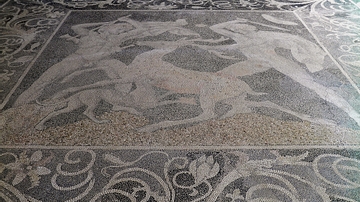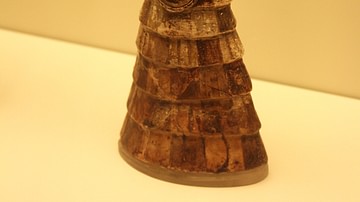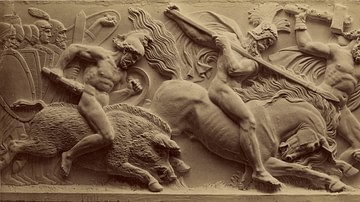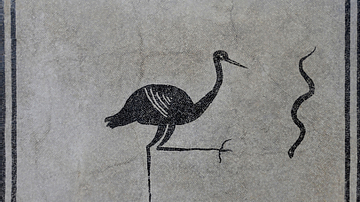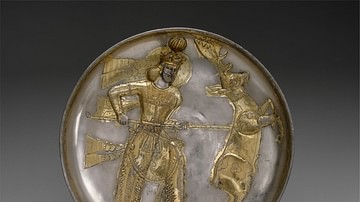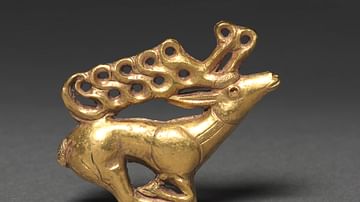Illustration
The stag and the snake mosaic: In some ancient texts, the stag is seen as a rival to the snake. It can also draw a snake out of its hole with its breath. The deer was a symbol of fertility and the animal of Artemis. The stag is illustrated with an erect penis in the scene and the snake is curled around the stag’s body. Period: Early Byzantine, circa 6th. century CE. Place: Constantinople, (Modern Istanbul, Turkey). Great Palace Mosaic Museum, Istanbul, Turkey.
The Great Palace Mosaic Museum was inaugurated in 1987 CE. The mosaics in the museum mostly depict animals and humans in nature, mythological, pastoral motifs and hunting scenes. Once located in today’s Sultan Ahmet District, the Great Palace of Constantinople was built by Constantine the Great. The Palace area extended from the Hippodrome to the coastline. Destroyed in the Nika Riot in the 6th century CE, the Great Palace was rebuilt by Justinian I. The mosaics, decorating the floors of the museum today date back to that restoration time. The mosaics are just one-seventh of the original work.
Cite This Work
APA Style
Team, H. S. R. (2018, January 08). Stag & Snake, Byzantine Mosaic. World History Encyclopedia. Retrieved from https://www.worldhistory.org/image/7822/stag--snake-byzantine-mosaic/
Chicago Style
Team, Hagia Sophia Research. "Stag & Snake, Byzantine Mosaic." World History Encyclopedia. Last modified January 08, 2018. https://www.worldhistory.org/image/7822/stag--snake-byzantine-mosaic/.
MLA Style
Team, Hagia Sophia Research. "Stag & Snake, Byzantine Mosaic." World History Encyclopedia. World History Encyclopedia, 08 Jan 2018. Web. 14 Apr 2025.

